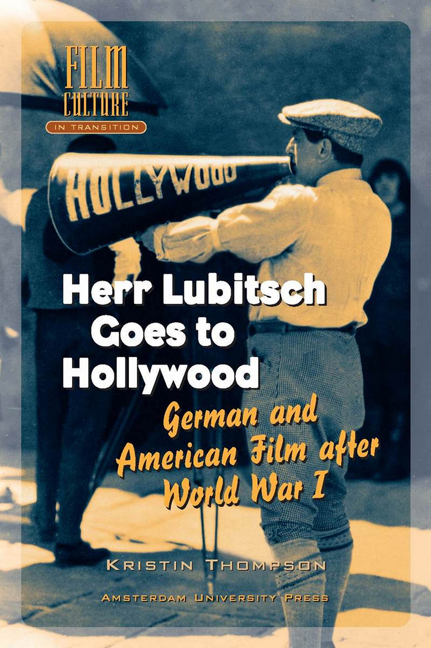Book contents
- Frontmatter
- Dedication
- Contents
- Acknowledgements
- Introduction
- Chapter One Lubitsch’s Career
- Chapter Two Making the Light Come from the Story: Lighting
- Chapter Three Subduing the Cluttered Background: Set Design
- Chapter Four Guiding the Viewer’s Attention: Editing
- Chapter Five Peeking at the Players: Acting
- Chapter Six Mutual Influences
- Epilogue: The Lubitsch Touch
- Notes
- Filmography
- Index
- Film Culture in Transition
- Plate Section
Chapter Three - Subduing the Cluttered Background: Set Design
Published online by Cambridge University Press: 14 January 2021
- Frontmatter
- Dedication
- Contents
- Acknowledgements
- Introduction
- Chapter One Lubitsch’s Career
- Chapter Two Making the Light Come from the Story: Lighting
- Chapter Three Subduing the Cluttered Background: Set Design
- Chapter Four Guiding the Viewer’s Attention: Editing
- Chapter Five Peeking at the Players: Acting
- Chapter Six Mutual Influences
- Epilogue: The Lubitsch Touch
- Notes
- Filmography
- Index
- Film Culture in Transition
- Plate Section
Summary
Classical Norms of Set Design
The classical norms of Hollywood set design developed during the 1910s, parallel to the changes in lighting practice. Lighting and setting were closely linked, working together to create the overall pictorial identity of the scene as the actors moved about within a playing space. Key lights for actors and fill lights on sets maintained the proper balance, with the background visible but not distracting.
The set itself worked toward the same ideals. The set needed to be visible, for it gave the viewer salient information about the characters. But once that information had been absorbed, there was no point in having the settings conspicuously visible throughout a scene. In closer shots especially, settings needed to be noticeably present, but not really noticed. Critic Kenneth MacGowan summarized this notion beautifully in 1921 when he described the work of two American art directors. His first example is the rich interiors of Wilfred Buckland, who had worked with David Belasco on the stage and later with Cecil B. De Mille at Lasky. “Lasky Lighting,” famous for its use of a single strong key with no fill or back light, had rendered his sets less visible in some films. MacGowan went on to describe the more recent, simpler sets designed Robert Brunton, who worked under contract to producer Thomas Ince:
There was something else to the pictures of Lasky. There were backgrounds to catch the light into shadows. Because Buckland had worked with the master-realist of the stage, he brought something besides the Belasco plays to Lasky. He brought tasteful richness of setting. Under the flat lighting of most movies, it would have bored and distracted with quite the force that it did on the stage … But made over by “Lasky Lighting” – as it is today in most Famous Players-Lasky productions – it has a splendid and satisfying richness.
It is the danger of distracting the eyes from the actors by over-developing setting or costumes, which made the next contribution to the screen picture so immensely valuable. Another art director, Robert Brunton, under the supervision of Thomas H. Ince, understood that essential task in creative progress – elimination. He built his settings with taste and restraint, but he made assurance doubly sure by blotting them out with shadows.
- Type
- Chapter
- Information
- Herr Lubitsch Goes to HollywoodGerman and American Film after World War I, pp. 53 - 70Publisher: Amsterdam University PressPrint publication year: 2005



